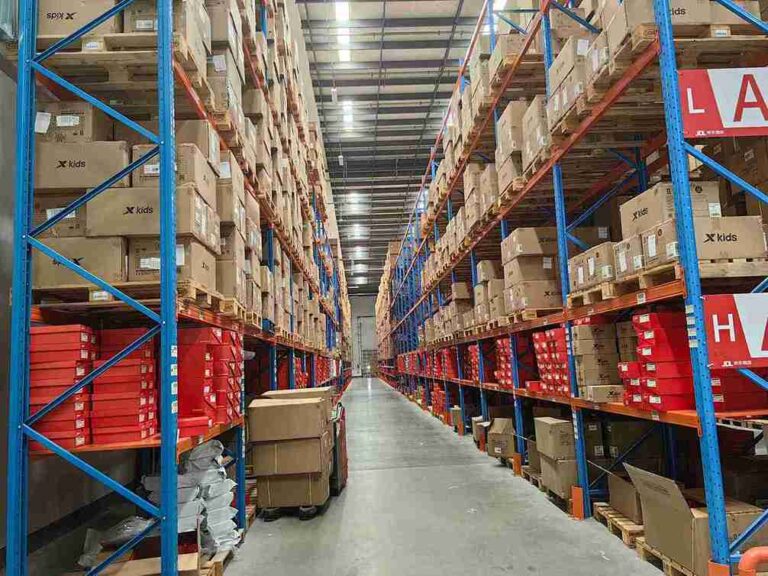📐 "First 50 Enterprise Queries Get Custom 3D Warehouse Design" Plan
![[Pallet racking tools required] – Impact wrench tightening rack bolts for secure installation](https://geelyracks.com/wp-content/uploads/2025/06/Pallet-racking-tools-required-–-Impact-wrench-tightening-rack-bolts-for-secure-installation.jpg)
Introduction: Why Choosing the Right Pallet Racking Tools Required is Critical
Installing pallet racking systems demands precision, safety, and efficiency—none of which are possible without the pallet racking tools required for the job. Whether assembling selective racks, drive-in systems, or cantilever racks, using the correct tools ensures structural stability, OSHA compliance, and long-term durability.
This definitive guide covers:
- Essential pallet racking tools required for every installation
- Specialized equipment for different rack types
- Safety gear to prevent workplace injuries
- Expert techniques for faster, error-free assembly
- Common installation mistakes and how to avoid them
By the end, warehouse managers, installers, and safety inspectors will know exactly which pallet racking tools required are non-negotiable for a flawless setup.
![[Pallet racking tools required] – Impact wrench tightening rack bolts for secure installation](https://geelyracks.com/wp-content/uploads/2025/06/Pallet-racking-tools-required-–-Impact-wrench-tightening-rack-bolts-for-secure-installation-1024x768.jpg)
1. Basic Hand Tools: The Foundation of Pallet Racking Installation
1.1 Wrenches and Socket Sets – A Must-Have in Pallet Racking Tools Required
No installation is complete without high-quality ratchet wrenches and impact sockets. Since most pallet racking systems use M10, M12, or ⅝-inch bolts, having 17mm, 19mm, and 21mm sockets is critical.
Why it matters:
- Under-tightened bolts lead to racking collapse
- Over-tightening damages beam connectors
- A torque wrench ensures perfect bolt tension (typically 50-70 ft-lbs)
1.2 Rubber Mallets and Dead Blow Hammers – Essential for Alignment
Steel hammers can dent racking uprights, but rubber mallets allow installers to adjust beams without damage. A dead blow hammer is particularly useful for:
- Seating baseplates flush against the floor
- Aligning cross beams without marring the finish
1.3 Measuring Tape and Laser Levels – Precision Matters
Even a ¼-inch misalignment can compromise rack stability. The pallet racking tools required for accuracy include:
- 25-foot steel measuring tape for consistent bay spacing
- Laser levels to ensure uprights are perfectly plumb
Pro Tip: Always double-check measurements before anchoring—adjusting later is costly.
2. Power Tools: Speed Up Installation Without Sacrificing Safety
2.1 Impact Drivers vs. Drill Drivers – Which is Best for Pallet Racking Tools Required?
- Impact drivers (best for speed): Deliver high torque for rapid bolt tightening
- Drill drivers (best for precision): Ideal for pre-drilling holes in decking or shims
Key Consideration: Use impact-rated sockets to prevent tool wear.
2.2 Cordless vs. Pneumatic Tools – What’s Right for Your Warehouse?
| Tool Type | Best For | Limitations |
|---|---|---|
| Cordless tools | Large warehouses, mobility | Battery life may slow progress |
| Pneumatic tools | High-power, continuous use | Requires an air compressor |
For most installations, 20V cordless impact wrenches strike the best balance.
3. Lifting Equipment: Moving Heavy Racking Components Safely
3.1 Forklifts – The Backbone of Pallet Racking Tools Required
No warehouse installation is efficient without a forklift or reach truck. Key uses:
- Positioning upright frames (some weigh 500+ lbs)
- Lifting cross beams into place
- Transporting decking panels
Safety Reminder: Always use fork guards to prevent beam scratches.
3.2 Scissor Lifts – Essential for High-Bay Racking
For racks over 20 feet tall, a scissor lift or boom lift is non-negotiable. They allow workers to:
- Secure top-tier beams safely
- Install overhead bracing
- Inspect anchors at height
4. Safety Gear: Protect Your Team During Installation
4.1 Hard Hats and Steel-Toe Boots – OSHA-Required Pallet Racking Tools Required
- Hard hats protect against falling beams or tools
- Steel-toe boots prevent crush injuries
4.2 Safety Harnesses – Mandatory for Elevated Work
When installing racks above 6 feet, a fall arrest system is required.
Common Oversight: Skipping harness inspections before use.
5. Specialized Tools for Different Rack Types
5.1 Selective Racking Tools
- Beam connectors for quick assembly
- Load beams with snap-on clips
5.2 Drive-In Rack Tools
- Guide rails for forklift alignment
- Heavy-duty impact wrenches for structural bolts
6. Anchoring Systems: Securing Racks to the Floor
6.1 Wedge Anchors vs. Chemical Anchors
| Anchor Type | Best Use Case |
|---|---|
| Wedge anchors | Standard concrete floors |
| Chemical anchors | High-load, seismic zones |
6.2 Rotary Hammer Drills – A Critical Pallet Racking Tool Required
Necessary for drilling ½-inch to ¾-inch holes in concrete.
7. Post-Installation Inspection Tools
7.1 Rack Inspection Gauges
Checks for:
- Beam deflection (should be < L/180)
- Upright plumb (max ⅛-inch deviation per 10 feet)
7.2 Ultrasonic Thickness Testers
Detects hidden corrosion in older racks.
8. Common Installation Mistakes (And How to Avoid Them)
- Mistake: Using incorrect pallet racking tools required (e.g., standard wrenches instead of torque wrenches)
- Solution: Always follow the manufacturer’s tool specifications
Conclusion: Invest in the Right Pallet Racking Tools Required for Success
Choosing the proper pallet racking tools required isn’t just about speed—it’s about safety, compliance, and longevity. From basic hand tools to specialized lifting equipment, every tool plays a vital role.
By following this guide, warehouses can:
✔ Reduce installation time by up to 40%
✔ Minimize workplace injuries
✔ Extend rack lifespan
For further reading, explore our Warehouse Safety Checklist and Racking Maintenance Guide.
FAQs: Pallet Racking Tools Required
1. Can I install pallet racking without a forklift?
Technically yes, but a forklift is one of the most critical pallet racking tools required for efficiency and safety.
2. What’s the minimum toolset needed for a small racking installation?
At a minimum:
- Ratchet wrench set
- Rubber mallet
- Measuring tape
- Laser level
3. How do I know if my anchors are installed correctly?
Use a torque wrench to verify tension and a hammer drill for clean holes.
4. Are used pallet racking tools safe to use?
Only if inspected for wear—especially impact wrenches and harnesses.
5. What’s the most overlooked pallet racking tool required?
Beam connectors—many installers forget them, leading to unstable racks.




